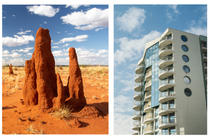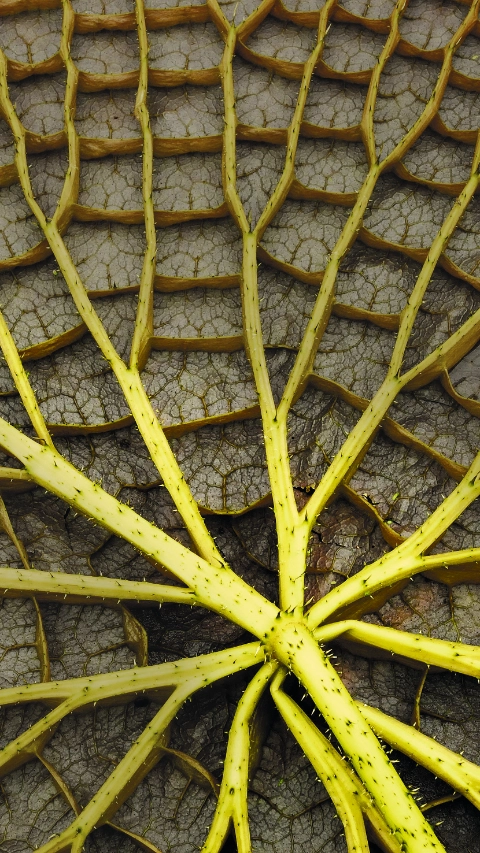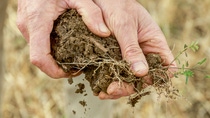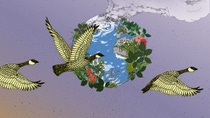Follow nature's example
Creating air-conditioning like termites or using water lilies to save people from floods – animals and plants often show us how to do things better. Here are some inventions inspired by ingenious flora and fauna around the world.
1. A flower to the rescue
Philippines
A huge water lily from the Amazon is the model for this locally developed concept. Thanks to the ribbed veins on its underside, the aquatic plant can bear a weight without sinking. According to an idea from Re-Leaf, this design is to be reproduced on the bottom of life rafts, working like a small air pocket to provide buoyancy as soon as it comes into contact with water. This will enable people in Tumana, a suburb of Manila, to better withstand floods and torrents in the future. During calm weather conditions, one idea is to convert this double-layer, modular platform into a park bench.
2. Ostrich-inspired running robot
Germany, United States
A team from the Max Planck Institute for Intelligent Systems and the University of California, Irvine, has designed robotic legs that are especially energy-efficient– inspired by the flightless but speedy ostrich. Unlike humans, running ostriches fold their feet back when they pull their legs up toward their bodies. The BirdBot does this, too, thanks to a mechanical muscle-tendon cable betweenthe foot and the leg joint. The robotic legs need only two motors for running – one on the hip joint and one on the knee joint. The robot can stand and lift its leg without a motor. As a result, the BirdBot is expected to need only one quarter of the energy required by previous walking robots. It has already passed the treadmill test.
3. Cool like termites
Zimbabwe
In Africa, termites are masters of air-conditioning. They build sealable tunnels through which cool air is sucked up from the depths of their mound and heat can escape. This smart ventilation principle enables the tiny insects to prevent extreme temperature fluctuations inside their nest. The Eastgate Centre in Harare, opened in 1996, was probably the world’s first human-made building to use this termite trick. Warmer air rises to the top, causing cooler air to flow in from below to replace it. This cooler air is channeled into spaces in the floor, and from there into the offices. Warmed by the heat of the day, the air is channeled upward by a system of pipes – a really “cool” effect.

4. As smooth as a shark
Germany
Sharks are perfect hunters, gliding through the water at lightning speed. Their skin plays a particular part in this. It consists of tiny riblets pointing toward the tail fin. As the shark swims, the water flows through the grooves between them, reducing frictional resistance. A joint project between Lufthansa Technik and BASF is taking advantage of this. The sharkskin
for aviation uses minute grooves on its surface film to reduce the proportion of friction in aerodynamic drag on aircraft. This lowers not only kerosene consumption but also CO2 emissions. In the future, both freight planes from Lufthansa Cargo and passenger airliners at SWISS will fly with shark on the surface.
5. Energizing like a butterfly
Germany, United States
Scientists at the Karlsruhe Institute of Technology and the California Institute of Technology have replicated the nanostructures of pitch-black butterfly wings on silicon solar cells. The idea is that these thin, material-saving cells will be able to absorb up to 200 percent more light and become serious competition for conventional crystalline solar cells. The original winged source of inspiration can almost completely absorb sunlight by means of minute holes in its wings and regulate its body temperature in this way.







